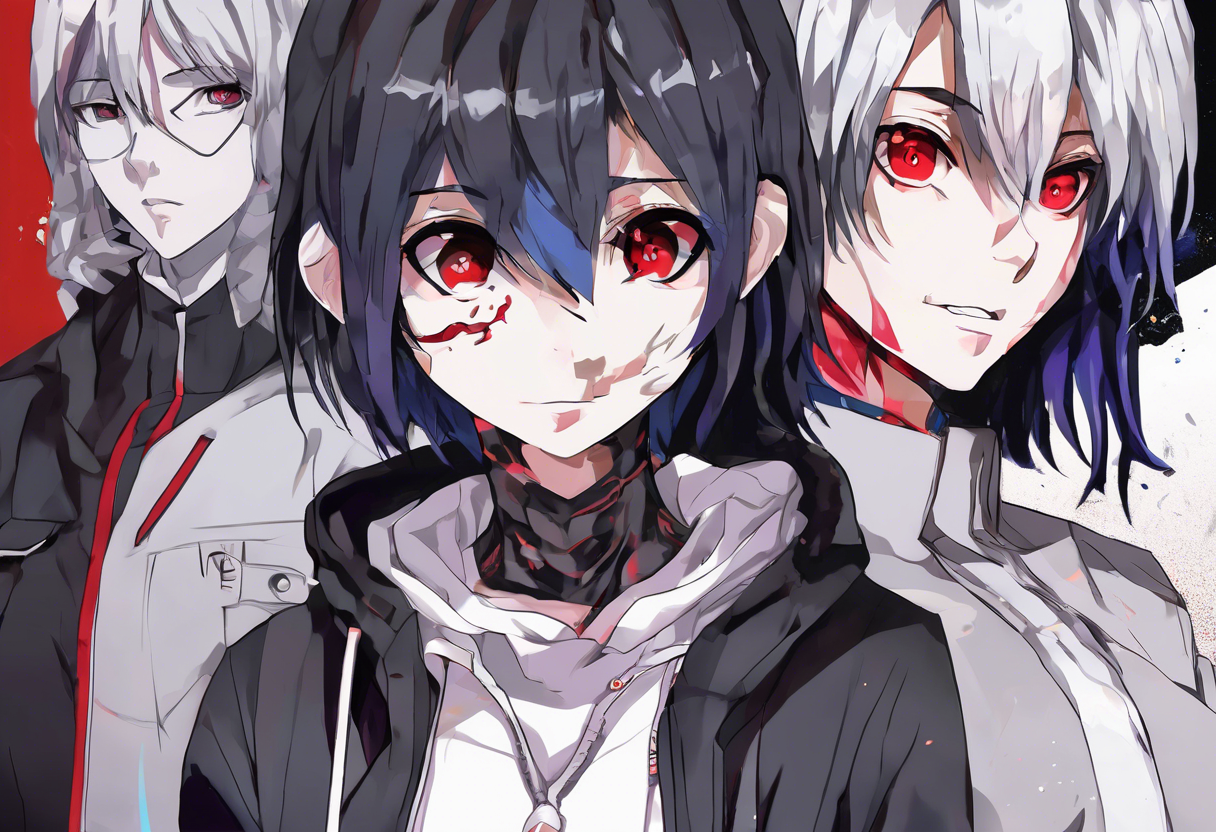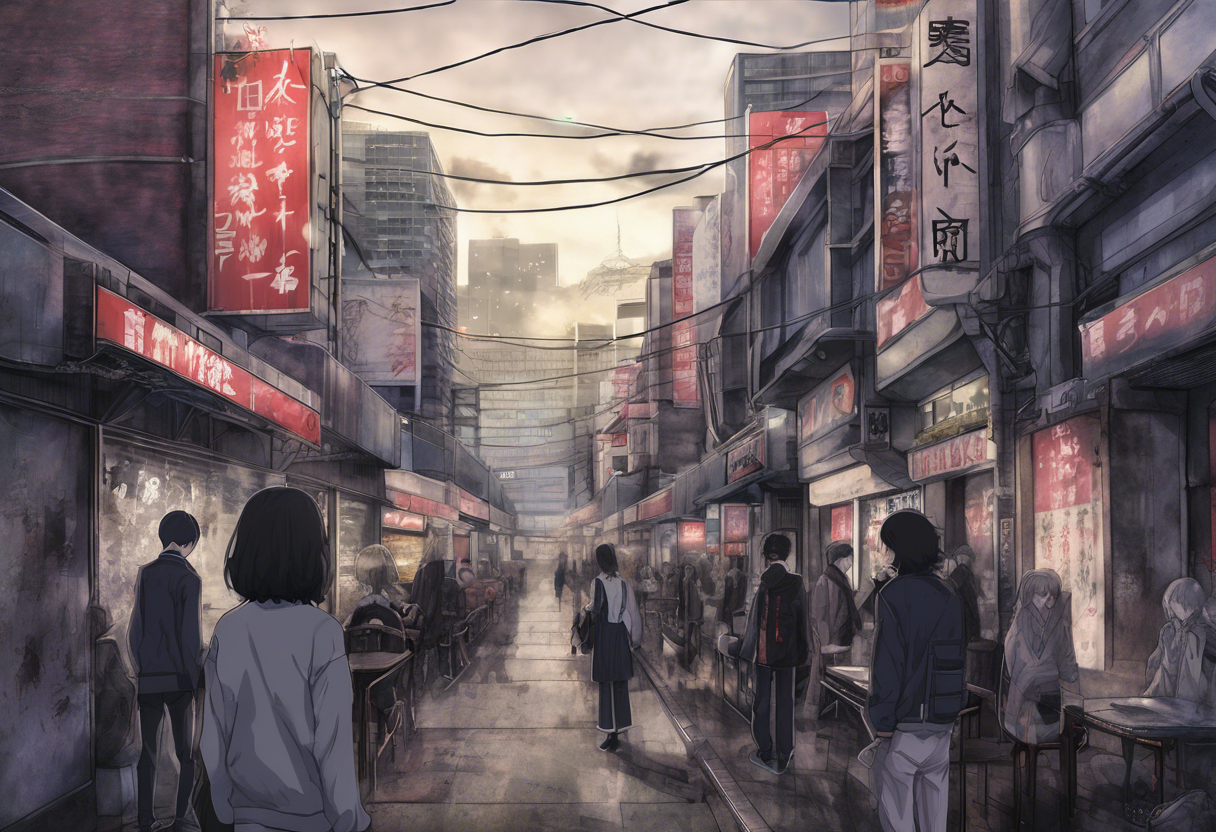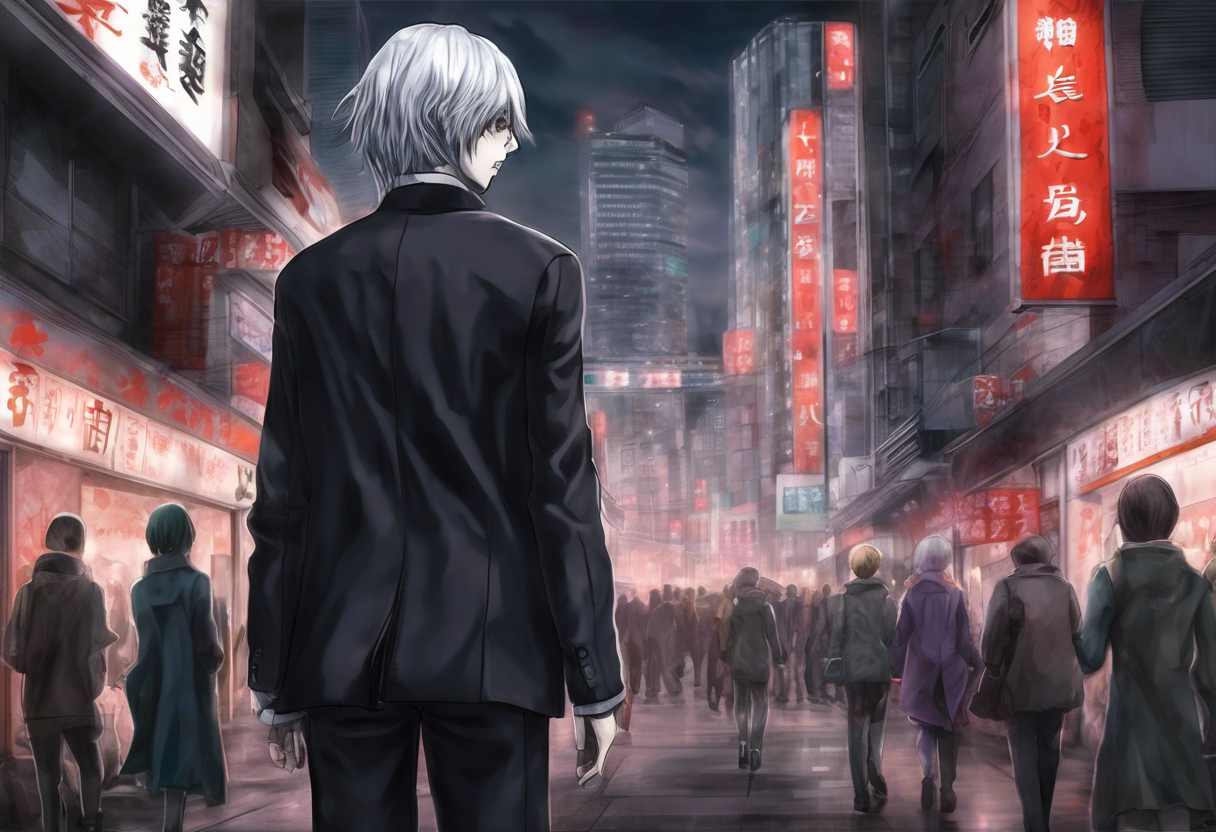Contents
Introduction
Tokyo Ghoul √A – Episode 18: "Thousand Paths" is a pivotal installment in the second season of the anime series Tokyo Ghoul, adapted from Sui Ishida’s manga of the same name. The episode is part of a larger narrative that explores the intricate and often brutal world where ghouls, supernatural beings that feed on humans, coexist with humans in secret. Directed by Shuhei Morita and produced by Pierrot, the episode was first aired in 2015.
The production of Tokyo Ghoul √A involved a team of seasoned creatives, including writer Chūji Mikasano and producer Ken Hagino. This episode stands out within its genre for its deep character development, complex moral themes, and the intense action sequences that define the series. "Thousand Paths" is particularly notable for its emotional depth and the significant plot advancements it brings to the story.
Plot Summary
The episode "Thousand Paths" unfolds against the backdrop of ongoing conflict between the Commission of Counter Ghoul (CCG) and the ghoul organization Aogiri Tree. The narrative begins with Yukinori Shinohara, a CCG investigator, being discharged from the hospital after sustaining injuries during a fight with Ken Kaneki, the main protagonist who has recently gained the powerful kakuja form by cannibalizing other ghouls [2][4].
As Shinohara recovers, the scene shifts to Juuzou Suzuya, a young and eccentric CCG investigator, who is spending his time alone at the zoo. His solitude is interrupted by the sight of a parent and child, which triggers a flashback to his traumatic past. This moment highlights Suzuya’s complex character and his struggle with his own emotions and past experiences.
Meanwhile, Seidou Takizawa invites Koutarou Amon to eat out, and Amon asks his partner Akira Mado to join them. The evening takes a dramatic turn when Akira gets drunk and begins to express her pent-up emotions, blaming Amon for the death of his father, Kureo Mado. Amon, already grappling with guilt over his father’s demise, is deeply moved by Akira’s suffering and vows to protect her. This emotional exchange is followed by Amon’s intense training regimen, where he pushes himself to his limits, performing over 7,000 push-ups in a single night.
The central plot of the episode delves into the ongoing battle between the CCG and Aogiri Tree. Kaneki, still struggling to control his kakuja form, reflects on happier times at Anteiku, a cafe that served as a sanctuary for ghouls. Hide, Kaneki’s friend, reveals that he knew Kaneki was a ghoul after Nishiki attacked them. Hide’s revelation is poignant as he collapses from blood loss and passes out in Kaneki’s arms, having been mortally wounded on the battlefield.
Touka Kirishima, another key character, chases after Kaneki as he walks out of the burning Anteiku, but she is stopped by Yomo, who reminds her of Yoshimura’s last request to protect her. Kaneki, carrying Hide’s body, faces off against Kishou Arima, the leader of the CCG, in a fierce battle. The outcome of this battle is left uncertain, with Kaneki, Hide, and Amon disappearing along with other CCG members, leaving only Arima unharmed.
The episode concludes with a glimpse into the aftermath of the battle, showing Touka opening a new cafe, symbolizing a new beginning and a continuation of the legacy of Anteiku. This final scene underscores the resilience and hope that characters hold onto despite the dire circumstances.
Themes and Symbolism
"Thousand Paths" is rich in themes and symbolic elements that add depth to the narrative. One of the central themes is the struggle with identity and morality. Kaneki’s transformation into a half-ghoul and his subsequent struggles to control his kakuja form serve as a metaphor for the internal conflict between human and monstrous aspects. This theme is further explored through the characters of Suzuya and Amon, who both grapple with their pasts and their roles in the world.
The episode also delves into the theme of sacrifice and protection. Amon’s vow to protect Akira and Kaneki’s determination to save Hide highlight the sacrifices characters are willing to make for those they care about. The burning of Anteiku and the opening of a new cafe by Touka symbolize the cyclical nature of life and the importance of holding onto hope and community.
The character of Hide, who is mortally wounded, serves as a symbol of the human cost of the conflict between ghouls and humans. His death underscores the gravity of the situation and the emotional toll it takes on the characters.
Cultural Impact
"Thousand Paths" has had a significant cultural impact since its release. The episode’s emotional depth and intense action sequences resonated with audiences, contributing to the series’ popularity worldwide. The character developments and plot twists in this episode have been widely discussed in fan communities and have influenced fan art, cosplay, and fan fiction.
The episode’s themes of identity, sacrifice, and hope have also been reflected in other media, such as manga and anime series that explore similar moral dilemmas. The influence of Tokyo Ghoul √A can be seen in the broader anime community, where it has set a standard for complex storytelling and character development.
Critical Reception
"Thousand Paths" received positive reviews from critics and audiences upon its release. Critics praised the episode’s emotional depth, character development, and the way it advanced the plot. The intense action sequences and the dramatic turns in the story were particularly highlighted.
However, some critics noted that the pacing of the episode could be overwhelming, with multiple plot threads and character arcs being resolved simultaneously. Despite this, the episode was generally well-received for its impact on the overall narrative of the series.
Legacy
The legacy of "Thousand Paths" lies in its enduring influence on the anime genre and its continued relevance to audiences. The episode’s exploration of complex themes and its deep character development have inspired many filmmakers and artists. The series as a whole has become a benchmark for storytelling in anime, with "Thousand Paths" being one of its most memorable and impactful episodes.
The episode continues to be discussed and analyzed by fans and critics alike, with its themes and characters remaining a topic of interest in the broader anime community. As a part of the Tokyo Ghoul series, "Thousand Paths" contributes to the series’ place in cinematic history as a compelling and emotionally charged narrative.
References
- https://tokyoghoul.fandom.com/wiki/Episode_18
- https://otakubishounen.wordpress.com/2015/02/14/tokyo-ghoul-%E2%88%9Aa-ep-6-thousand-paths-summary/
- https://en.wikipedia.org/wiki/Tokyo_Ghoul_%E2%88%9AA
- https://www.bubbleblabber.com/2015/03/review-tokyo-ghoul-%E2%88%9Aa-thousand-paths/
- https://tokyoghoul.fandom.com/wiki/Tokyo_Ghoul_(anime)







